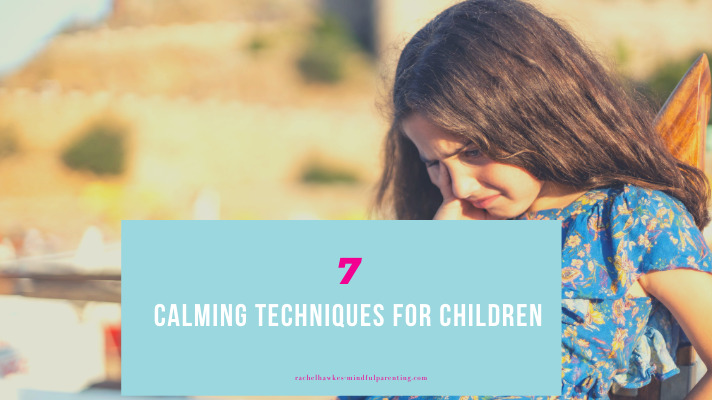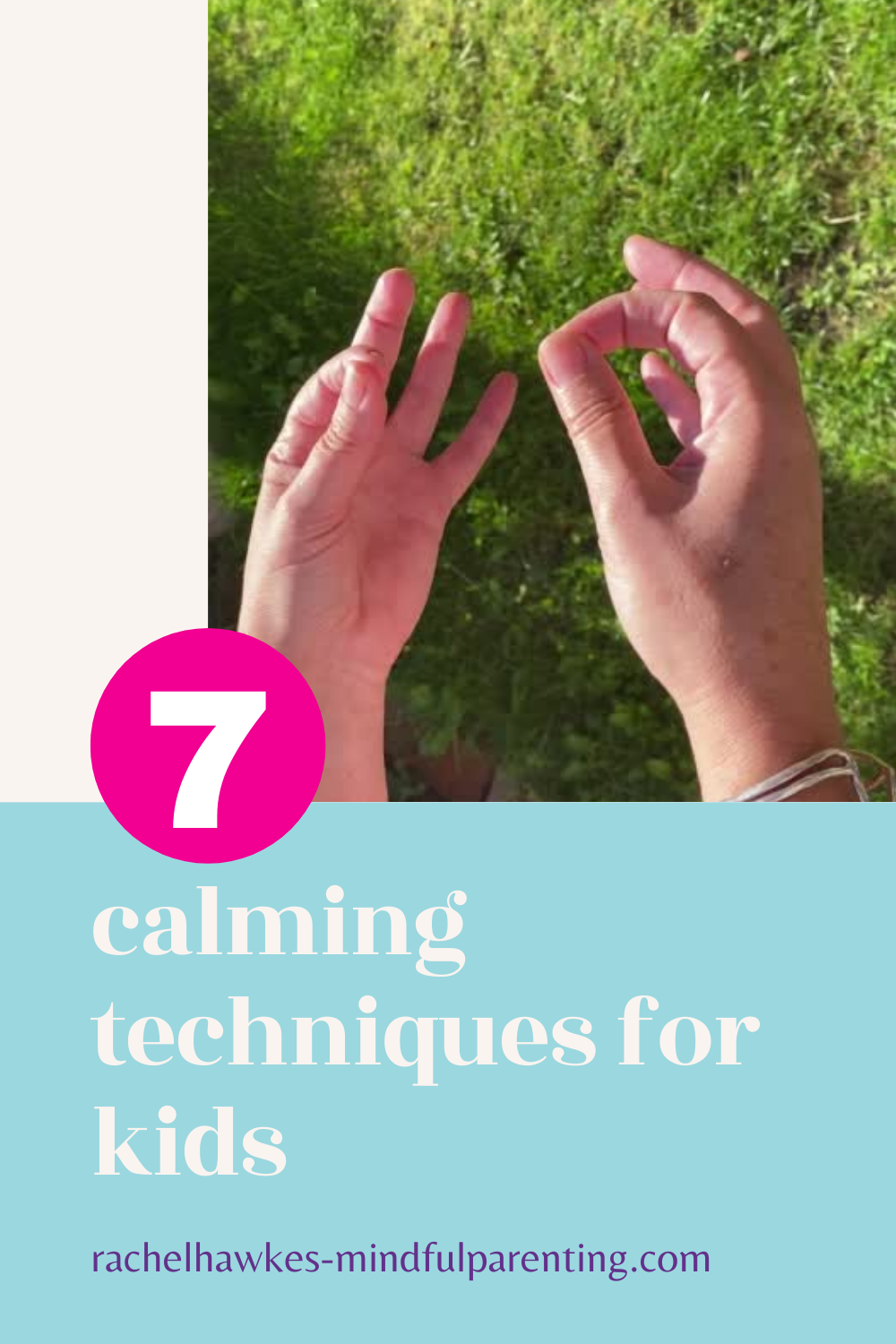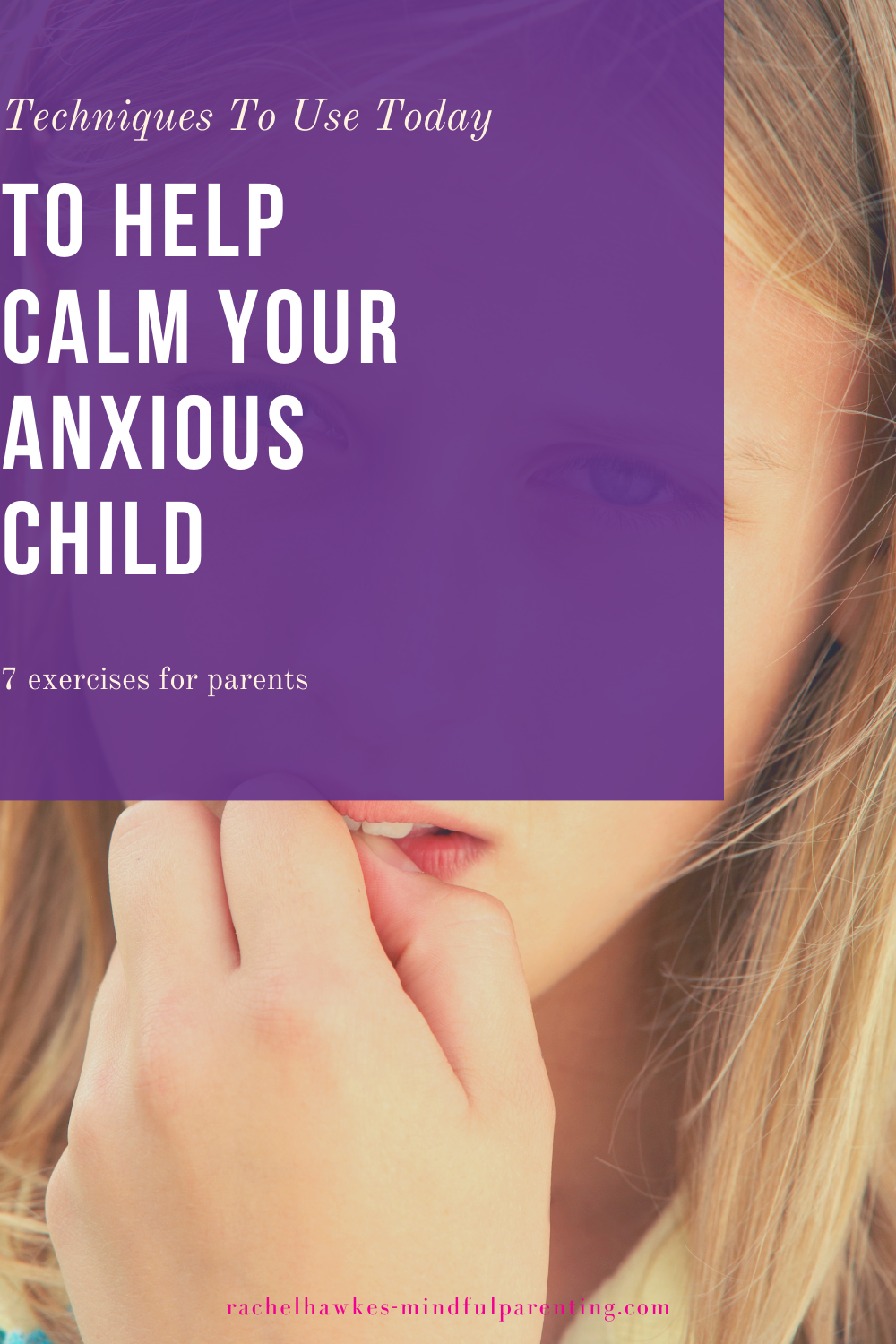7 Calming Techniques For Kids

No matter the age, when we see our child dealing with their anxiety or feelings that overwhelm them it is hard to know what we can do to make them feel better.
As a mum to an over-anxious daughter, I used to want to try and 'fix it'. This doesn't work. Why? Because we need to provide the tools that enable our children to be able to help themselves. Working with them in a safe space.
Feelings In Children
There can be so many reasons why your child feels anxious, stressed, overwhelmed or angry.
You may be aware of the reasons, or perhaps it is something that has recently developed. There is lots of help out there, both for parents and children. As always, if you are concerned that these emotions are negatively affecting your child, your first point of call should be to seek some medical advice and support. Other professional help can often make a huge difference. Personally we saw both a private counsellor specialising in childhood CBT and also a hypnotherapist, both of which helped to some degree.
These calming techniques for anxiety, stress or emotional overwhelm are simple mindful tools that you can start using at home today.
What Can YOU Do?
What calming techniques can you use that can help at home? I have listed below some of the calming exercises that we have used and still use. These approaches are the 'mindful tools' that you can work through with your child, to enable them to have ways to help themselves. They can be used for a variety of emotions, all focused on calming the body and mind.
7 Techniques For Calming
Hand Mudhra - My kids love using this one. It is a great one to use even with the young kids. I have taught this to Year R (age 4) in primary schools and they always enjoy it. It also is suitable for children on the autistic spectrum or with ADHD, as the sensory aspect can be a calming technique all of its own. I have a full video explaining more on Youtube.
1-2-3 Breath - With the eyes closed and finding somewhere comfortable to either sit, lie down or stand. Inhale through the nose for the count of 3, taking your time, exhale for the count of 3. Notice that as the breathing becomes regular that the time you take to count often gets longer. This equal breathing technique is really good for getting the body back into balance. Especially useful when dealing with feelings of anger or if your child is really over-stimulated. Just finish when they are done, do not force the breath and allow them to find their own pace.
Shake It Out - This is another great one for getting rid of all that pent up emotion. Standing, start with the hands and really shaking them out to the side. You can picture all that emotion just flying out, or get them to picture something that has been upsetting them, or making them cross. As you get into it, shake the arms along with the hands, then each leg and foot. Building up to the whole body - make it fun - let them feel they can really let go! The younger kids love this one, it feels so good to just allow the body to shake all that emotion out! Remember its not necessary 'bad stuff', there are no 'bad' emotions, but if those emotions are overwhelming then we need a way of ridding the body and mind and having a new starting point.
Talk & Listen - Give your child space to just talk. This sounds so simple but I know from experience that in my desire to 'help' I am often trying to 'fix' the situation. Sometimes the best help is just to listen. Not commenting, or offering solutions. Let your son or daughter know that your door is open, that you will make the time and space to HEAR them. So often our kids are dealing with thoughts and emotions that they do not have the skills or experience to sort out. Having that space to just 'get it out' can allow them the headspace to come up with their own solutions, or at least be able to then ask for the help. Rather than us trying to give it whether they want to hear it or not. This is a key component if you are trying to calm an anxious child, as the chatter that goes on in their head is often very negative.
Walk-In Nature - One of my favourites, though it might not always seem possible if you live in a town or city. But think of a park, green or even just some trees that have been planted. We have a natural affinity to nature, and our kids tap into it easily if given the chance. If you can find grass, then take off your shoes. Feel that connection to the earth, let your kids squish their toes in the grass. Look around, pay attention to the sights, sounds and smells. This leads to the next technique.
Mindful Listening - I have written full details here, but either when you are in your area of nature. Or just need something to grab that attention before emotions become too much. Stop. Stand still. Take your attention to the noises far away from you. Focus on them. Is it a truck? Car? Wind blowing? When we focus on really listening it is hard for all those other thoughts to pop in. Though they will still try! You can work this one anywhere, outside or in. Before bed to calm, or outside when you are all together as a family. It works well for calming as it gets the brain to stop running with the emotions and to focus on something really tangible. Even the young kid's age 4+ can get involved in this one.
Be Silly - When your kids are hitting those emotional highs and lows, we need to switch things around. Allow them to let go of those heighten emotions and sometimes the best way is to make it physical. So release the silly! Put on some music, dance away, make faces, dress up - whatever you know gets your kids laughing and having fun. Be spontaneous with this, if you see those emotions building, or the fight between the siblings escalating, drop what you are doing and crank up the volume on the music. It is a fab tool to change the vibe, creating a completely different mood.
Emotional Rollercoaster
As our kids grow, we face different challenges. Their emotional states change with their developing brains and we need to be able to adapt as parents to this landscape. As a parent to teenagers, I know that things that worked before (shake-it-out) will no longer be on the cards, but music really changes it, or we just sit and chat, or go and get out in nature, I am no longer dealing with the same moods or anxieties but my toolset is still in place. I shall write soon on dealing with teenagers, as I think we need to address that and how we can prepare them with tools of resilience. As we move to homeschooling, I am expecting the emotional aspects to change. I already see that my daughter's anxiety has lessened, however, that negative bias will be present for some time. I will continue to use as many parenting tools as I can to build upon the current calming techniques for anxiety that we have.
Tweens And Teens
For parents with slightly older children, we often need to adapt our relationship. You can read more Mindfulness techniques for teens here, including details of how to use Affirmations for Tweens and Affirmations for Teens. There are also affirmation packs in the shop for you too.
How Can I Help Further
How Can I Help You Further?

Have you grabbed the FREE AFFIRMATIONS? 12 glorious, full-colour printables for you to keep.

Join Facebook - all for parents looking for more ideas. It is a lovely group, filled with like minded parents.
x
Rachel
Keep going, we are all facing new challenges as parents and support from others is so important to ensure that we feel we are all doing all we can.


Categories
- Affirmations (6)
- Things To Do With The Kids - Mindful Makes (13)
- Things To Try At Home (31)
- Anxiety - Tools For Parents & Kids (12)
- Mindfulness Techniques For Kids (26)
- Mindfulness Techniques For Adults (5)
- Mindful Parenting (37)
- Mindful Living (10)
- Mindful Working (3)
- Work Life Balance (14)
- Babies and Beyond - Mindful Mums (4)
- Christmas (6)
- All Articles (40)
Lots of Mindful Parenting FREEBIES
if you would like to grab regular freebies including printables, then please join the mailing list.
Mindful Parenting Printable Packs
Just part of the products available, affirmations as such an easy mindful activity to add into the day
Affirmations For Mums
Printable daily positive affirmations
20 Daily Positive Affirmations with 4 blank cards for you to create your own affirmations.
GIANT Affirmations Bundle
Over 100 Affirmations!
Your Giant Affirmation Bundle with over 100 affirmations!
Printable affirmations for:
- Kids
- Tweens
- Teens
- Mums
- 30 Days of Affirmations
- 10 blank cards to create your won


0 comments
Leave a comment